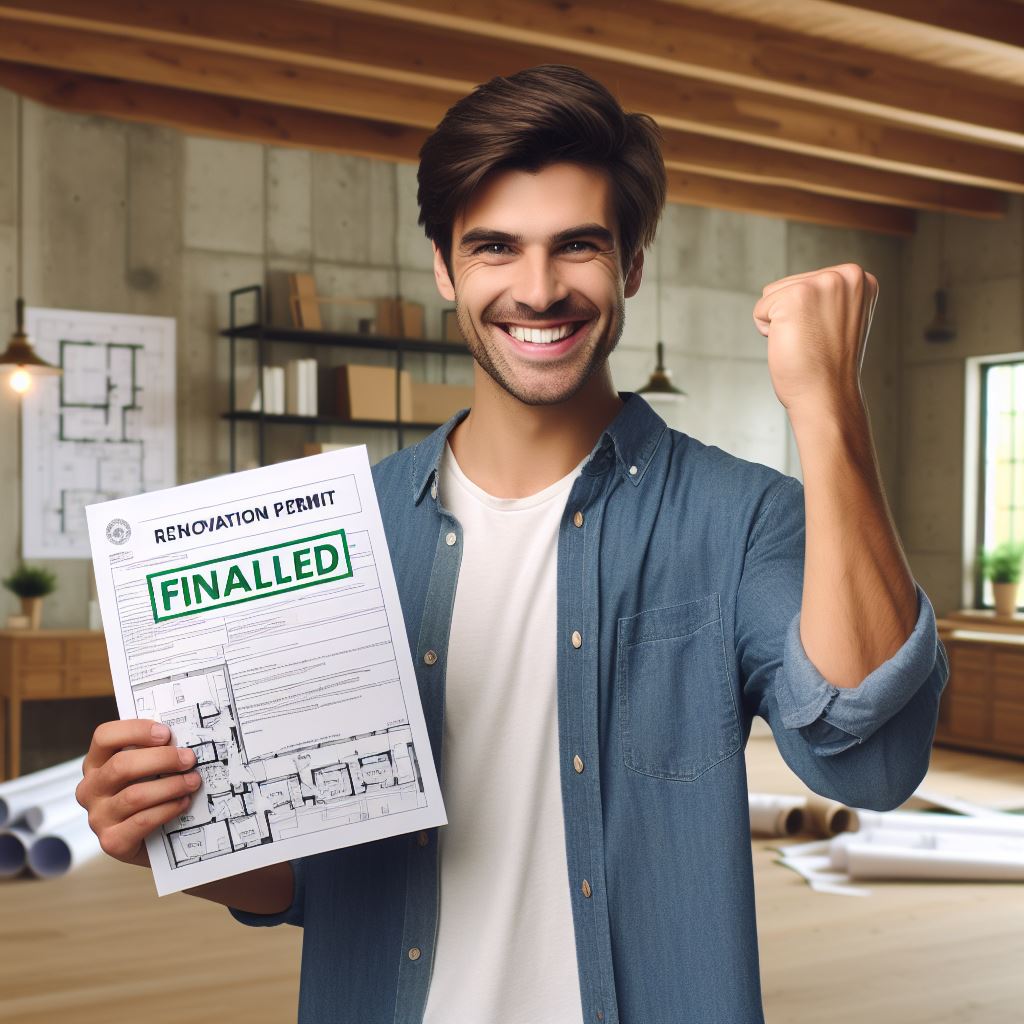Introduction
Historic properties hold a special place in our society.
These buildings or structures have witnessed the events that shaped our history, and they represent our heritage and cultural identity.
Preserving these properties is crucial to maintain our connection to the past and the stories they tell.
However, the conservation of historic properties is not without challenges.
One major concern is the energy efficiency of these buildings.
As they were constructed using materials and techniques from a different era, they often lack modern insulation and energy-saving features.
This leads to higher energy consumption, increased costs, and a significant carbon footprint.
Implementing energy-efficient measures in historic properties is essential for several reasons.
Firstly, it reduces the environmental impact associated with energy consumption.
By improving insulation, upgrading HVAC systems, and utilizing renewable energy sources, we can lower greenhouse gas emissions and contribute to a more sustainable future.
Secondly, energy efficiency in historic properties helps to preserve these buildings for future generations.
By reducing the strain on the structure and protecting it from potential damage caused by inefficient systems, we can extend its lifespan and ensure its continued relevance.
Lastly, energy efficiency also brings economic benefits.
By optimizing energy usage, owners can reduce operating costs and make these properties more affordable to maintain.
In fact, energy efficiency plays a vital role in preserving historic properties.
It not only contributes to a sustainable future but also ensures the longevity and significance of these buildings.
By implementing energy-efficient measures, we can protect our cultural heritage while also reducing our environmental impact.
Challenges of Energy Efficiency in Historic Properties
Preserving the charm and character of historic properties while ensuring energy efficiency poses a unique set of challenges.
As we delve into these challenges, we find that they are deeply rooted in the historical context of these buildings.
Building materials and techniques used in historic properties
Historic properties often boast architectural marvels constructed with materials and techniques of a bygone era.
While these materials contribute to the property’s aesthetic appeal, they can impede modern energy efficiency standards.
Solid stone walls, for example, may lack the insulation properties required for optimal energy conservation.
Retrofitting such structures without compromising their integrity becomes a delicate balancing act.
Structural limitations and their impact on energy efficiency
The structural design of historic properties, though admirable, can pose significant hurdles to energy efficiency upgrades.
Limited cavity spaces for insulation or the absence of a designated air barrier can lead to increased energy loss.
Modernizing these structures without compromising their structural integrity requires innovative solutions that respect the original design while addressing contemporary energy needs.
Restrictions imposed by historical preservation regulations
Preserving the historical significance of a property is paramount, and this often means navigating through a labyrinth of regulations.
Striking a balance between adhering to preservation guidelines and implementing energy-efficient measures can be challenging.
For instance, replacing original windows with more energy-efficient ones may be met with resistance, requiring a nuanced approach to meet both conservation and energy goals.
As we strive to make historic properties more sustainable, overcoming these challenges necessitates a holistic understanding of the building’s historical context.
Innovative technologies, such as non-intrusive insulation methods and advanced heating and cooling systems, are essential in meeting the energy efficiency needs of these treasures from the past.
The path to energy efficiency in historic properties is a delicate dance between preserving the past and embracing the future.
Read: Managing Moisture in Old Buildings
Benefits of Energy Efficiency in Historic Properties
Preserving the charm and character of historic properties while embracing modern sustainability is a delicate balance.
Energy efficiency in historic properties offers a multitude of benefits that extend beyond mere preservation, encompassing environmental, financial, and human-centric advantages.
Environmental Advantages
Historic properties, often laden with architectural significance, are the custodians of our cultural heritage.
Implementing energy-efficient measures in these structures is not just a nod to contemporary concerns but also a commitment to environmental stewardship.
Upgrading insulation, windows, and HVAC systems reduces energy consumption, lowering the carbon footprint associated with these venerable buildings.
By preserving historic properties through sustainable practices, we contribute to the global effort to combat climate change, ensuring a greener and healthier planet for future generations.
Cost-Saving Potential
While the initial cost of retrofitting historic properties for energy efficiency might seem daunting, the long-term financial benefits are compelling.
Energy-efficient upgrades often result in decreased utility bills, as these improvements enhance the overall performance of the building.
Additionally, governments and local authorities frequently offer incentives, grants, or tax credits for energy-efficient renovations in historic properties, making the upfront investment more manageable.
Over time, these measures not only preserve the historic character but also contribute to significant cost savings for property owners.
Enhanced Comfort and Livability
Modernizing energy systems in historic properties does not equate to sacrificing comfort or livability.
In fact, it enhances both.
Proper insulation and efficient heating, ventilation, and air conditioning (HVAC) systems create a more comfortable living environment.
By preserving and upgrading historic structures with an eye on energy efficiency, occupants can enjoy the benefits of modern amenities without compromising the unique charm of the property.
Improved thermal comfort, better air quality, and reduced noise levels contribute to an enhanced overall living experience.
In essence, the benefits of energy efficiency in historic properties extend far beyond the preservation of aesthetics.
From environmental conservation to substantial cost savings and heightened comfort, embracing sustainability in these structures ensures a harmonious coexistence of past and future.
As custodians of our heritage, it is our responsibility to strike this delicate balance for the well-being of our planet and the enjoyment of generations to come.
Read: Navigating Local Zoning Laws in Renovations

Strategies for Improving Energy Efficiency in Historic Properties
Conducting Energy Audits and Assessments
Preserving the charm of historic properties while enhancing energy efficiency requires a thoughtful approach.
Begin by conducting comprehensive energy audits and assessments.
These evaluations pinpoint areas of energy loss and help prioritize improvements.
By understanding the unique characteristics of the historic property, you can tailor solutions that balance conservation with modern efficiency.
Retrofitting and Insulation Techniques Suitable for Historic Properties
Preserving the integrity of historic structures often means navigating the challenge of retrofitting.
Carefully chosen insulation techniques can significantly improve energy efficiency without compromising the building’s aesthetic.
Utilize materials that align with the property’s era, such as reclaimed wood for window frames and weather-stripping for doors.
Strategically adding insulation in non-intrusive ways helps regulate indoor temperatures while respecting the property’s historical authenticity.
Preserving the integrity of historic structures often means navigating the challenge of retrofitting.
Carefully chosen insulation techniques can significantly improve energy efficiency without compromising the building’s aesthetic.
Utilize materials that align with the property’s era, such as reclaimed wood for window frames and weather-stripping for doors.
Strategically adding insulation in non-intrusive ways helps regulate indoor temperatures while respecting the property’s historical authenticity.
Utilizing Energy-Efficient Appliances and Technology
Embrace modern advancements in energy-efficient appliances and technology without sacrificing the historic character of the property.
Consider installing smart thermostats, LED lighting, and energy-efficient HVAC systems designed to seamlessly integrate with historical structures.
Choose appliances that blend with the property’s style while delivering optimal energy performance.
By combining technology with preservation, you can significantly reduce energy consumption while maintaining the timeless appeal of the historic property.
In a nutshell, achieving energy efficiency in historic properties involves a delicate balance between preservation and modernization.
Conducting thorough energy audits, implementing suitable retrofitting techniques, and integrating energy-efficient appliances are crucial steps.
By embracing these strategies, we can ensure that historic properties not only stand the test of time but also contribute to a sustainable future.
Read: Period-Appropriate Decor for Heritage Homes
Balancing Preservation and Energy Efficiency
Preserving the historical integrity of properties is a noble endeavor, but in the face of modern challenges, finding a balance between conservation and sustainability becomes paramount.
This section delves into the delicate dance of maintaining the essence of historic properties while ensuring they meet contemporary standards of energy efficiency.
Solutions for preserving historical integrity
Preserving the soul of historic properties requires thoughtful solutions.
One approach is to integrate modern technologies discreetly, ensuring they don’t compromise the visual or structural integrity.
For instance, advanced insulation materials can be tucked away within walls, preserving the aesthetics while enhancing energy efficiency.
Similarly, upgrading windows with energy-efficient glass maintains the charm while reducing heat loss.
Strategic landscaping is another avenue.
Planting trees strategically can provide shade to cool buildings naturally, reducing the reliance on energy-intensive cooling systems.
This eco-friendly approach aligns with the ethos of historical preservation.
Exploring potential conflicts between preservation and energy efficiency
Conflicts often arise when attempting to modernize historic properties.
The challenge lies in reconciling the need for energy efficiency with the desire to maintain the original character.
Striking this delicate balance requires a nuanced understanding of the building’s historical significance and the judicious application of energy-saving measures.
Preservationists may resist alterations, fearing they could compromise authenticity.
However, ignoring energy concerns risks long-term damage to the structure and increased carbon footprint.
This conflict necessitates collaborative efforts between preservationists, architects, and environmental experts.
Achieving a balance between conservation and sustainability
Achieving harmony between conservation and sustainability is not just an idealistic vision but an attainable goal.
The key lies in adopting a holistic approach that considers the unique features of each historic property.
Implementing adaptive reuse strategies, where spaces are repurposed for modern functions without sacrificing historic elements, is one effective method.
Furthermore, community engagement plays a vital role.
By fostering an understanding of the dual importance of preservation and energy efficiency, stakeholders can work together to find innovative solutions.
This collaborative spirit ensures that historic properties continue to stand as testaments to the past while embracing a sustainable future.
Basically, the journey towards energy efficiency in historic properties requires a delicate balance between preservation and innovation.
By embracing thoughtful solutions, navigating potential conflicts, and striving for a harmonious coexistence, we can ensure that our historical treasures stand resilient against the passage of time while contributing to a more sustainable future.
Read: Step-by-Step: Getting Your Renovation Permit
Case Studies of Energy Efficiency in Historic Properties
Preserving the charm and character of historic properties while embracing energy efficiency is a delicate balance.
In this section, we delve into two inspiring case studies showcasing successful transformations that marry the old-world allure with modern green building practices.
Example 1: Renovating a Historic Home with Green Building Practices
Nestled in the heart of a historic district, a century-old Victorian home underwent a transformative renovation.
The project aimed to preserve its architectural integrity while significantly improving energy efficiency.
The team adopted green building practices, incorporating sustainable materials and energy-efficient technologies.
Original windows were carefully restored with high-performance glazing, maintaining the historic aesthetic while minimizing heat loss.
Insulation upgrades were seamlessly integrated into the walls and attic, enhancing the home’s thermal performance.
Additionally, a state-of-the-art HVAC system replaced the outdated one, ensuring optimal energy use.
Example 2: Converting an Old Building into an Energy-Efficient Space
In the heart of a bustling urban landscape, an abandoned industrial building found new life as a vibrant, energy-efficient hub.
The adaptive reuse project preserved the industrial charm by repurposing existing materials and maintaining key architectural features.
However, the focus was on energy efficiency.
Solar panels adorned the rooftop, generating clean energy to power the building.
Smart lighting and climate control systems were installed, optimizing energy consumption based on occupancy and natural light levels.
The project not only breathed new life into a neglected structure but also showcased the potential of repurposing historic buildings for sustainable, modern uses.
Lessons Learned and Inspirations from Successful Projects
These case studies offer invaluable lessons for future projects.
Collaborative efforts between preservationists and sustainability experts proved crucial.
Careful planning, research, and a commitment to balancing historical significance with contemporary efficiency were evident in both examples.
Inspiration can be drawn from the seamless integration of cutting-edge technology and time-honored craftsmanship.
The success of these projects highlights the possibility of achieving energy efficiency without compromising the unique character of historic properties.
As we embark on future endeavors, these case studies serve as beacons guiding us toward a harmonious coexistence of the past and the future in our built heritage.
Funding and Incentives for Energy Efficiency in Historic Properties
Achieving energy efficiency in historic properties can be a significant endeavor due to various challenges.
However, there are several funding opportunities and incentives available to support energy efficiency improvements in these unique structures.
This section explores grants, loans, tax credits, and partnerships that can help historic property owners finance and undertake energy efficiency projects.
Grants and Loans for Energy Efficiency Improvements
Historic property owners can access grants and loans specifically designed to support energy efficiency improvements.
These financial resources can help offset the costs associated with upgrading energy systems, implementing insulation, and installing renewable energy technologies.
Grants are typically provided by governmental and non-profit organizations and do not require repayment.
They are awarded based on various eligibility criteria, such as the property’s historic significance and the proposed energy efficiency measures.
Some grants may cover the entire cost of the project, while others may provide partial funding.
Loans, on the other hand, require repayment but offer favorable terms and interest rates.
They can be obtained from government agencies, financial institutions, or specialized programs that focus on energy efficiency in historic properties.
Loans enable property owners to finance energy efficiency projects upfront and pay back the loan gradually, often using the energy savings generated by the improvements.
Tax Credits and Incentives for Historical Preservation and Energy Efficiency
To encourage energy efficiency and historical preservation, governments at various levels provide tax credits and incentives to property owners.
These incentives aim to reduce the financial burden of implementing energy efficiency measures in historic properties.
Tax credits are direct reductions in the amount of taxes owed by historic property owners.
They are generally dollar-for-dollar credits, meaning that the credit amount directly decreases the tax liability.
Property owners can claim tax credits when filing their tax returns, effectively reducing the overall project costs.
Incentives, on the other hand, are financial rewards or benefits that are not directly tied to tax deductions.
They can take various forms, such as cash payments, rebates, or discounts on utility bills.
Incentives are often administered by utility companies, state agencies, or energy efficiency programs, and they provide immediate financial relief to property owners undertaking energy efficiency improvements.
Partnerships and Initiatives Promoting Sustainable Renovation
The importance of partnerships and initiatives cannot be overstated when it comes to promoting energy efficiency in historic properties.
Collaborative efforts between government agencies, preservation organizations, and energy efficiency advocates can create a comprehensive support system for property owners.
Partnerships bring together expertise from different sectors, allowing for the development of specialized funding programs and resources.
These partnerships help streamline the application and approval processes for grants and loans, making it easier for property owners to access financial assistance.
Furthermore, initiatives that focus on sustainable renovation and energy efficiency can raise awareness and provide guidance to historic property owners.
These initiatives may offer educational materials, workshops, or technical assistance on how to navigate the complex process of upgrading energy systems in historic structures.
The National Trust for Historic Preservation, for example, has established the Preservation Green Lab, which conducts research and provides resources to support sustainable and energy-efficient practices in historic properties.
Similar initiatives exist at the state and local levels, aiming to integrate energy efficiency into historic preservation efforts.
All in all, funding and incentives play a crucial role in enabling energy efficiency projects in historic properties.
Grants, loans, tax credits, and partnerships all contribute to the financial stability and success of such endeavors.
By leveraging these resources and promoting sustainable renovation initiatives, historic property owners can preserve their buildings’ unique character while reducing their environmental impact.
Conclusion
In delving into the intricate world of historic preservation, one cannot underestimate the pivotal role that energy efficiency plays in safeguarding our heritage.
This post has underscored the delicate balance between preserving the past and embracing the future.
Historic properties, with their unique charm and cultural significance, face the dual challenge of maintaining authenticity while adapting to contemporary energy standards.
We’ve explored the multifaceted benefits of integrating energy-efficient practices into these venerable structures.
From reducing environmental impact to lowering operational costs, the advantages extend beyond the walls of the historic edifices themselves.
Energy efficiency becomes a stewardship tool, ensuring that our cultural treasures endure for generations to come.
As we conclude, it is imperative to emphasize that our journey toward sustainable historic preservation is an ongoing endeavor.
The field is ripe for further research and innovation, beckoning scholars, preservationists, and policymakers to collaborate in refining strategies and technologies.
By harnessing the power of modern advancements, we can strike a harmonious balance between honoring our past and meeting the demands of the present.
Investment in research is an investment in the longevity of our cultural heritage.
Incentives for implementing energy-efficient measures in historic properties should be explored and expanded.
The preservation community must continue to collaborate, share findings, and champion best practices to ensure a collective and effective approach.
In our exploration of energy efficiency within historic properties, the overarching theme remains clear – sustainable historic preservation is not just a possibility; it is an imperative.
The potential for a future where our heritage sites thrive alongside modern environmental standards is within reach.
Through a holistic approach that values both conservation and innovation, we can navigate the delicate dance between tradition and progress.
As we bid adieu to this post let it be a call to action for all stakeholders invested in the legacy of our built heritage.
By integrating energy efficiency into our preservation efforts, we embark on a path that not only sustains the past but paves the way for a more resilient and vibrant future.




